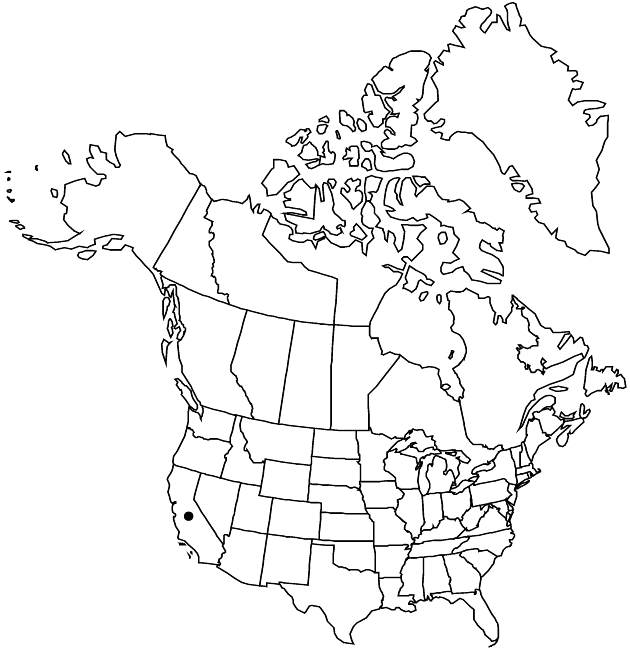Erigeron serpentinus
Phytologia 72: 203. 1992.
Perennials, 40–50 cm; taprooted, caudices simple. Stems erect (arising from crowns, without axillary leaf tufts), glabrous or glabrate, eglandular. Leaves mostly cauline; blades linear, 20–40 × 0.6–0.8 mm (mid and distal longer than internodes), barely reduced distally, margins entire, ascending-ciliate (cilia thin-based), faces glabrous, eglandular. Heads 1 or 2–4 in loosely corymbiform arrays. Involucres 4.5–5 × 9–12 mm. Phyllaries in 3–5 series (inner: margins narrowly scarious), glabrate (barely perceptible), densely and minutely glandular. Ray-florets 9–13; corollas white, drying blue, 7–8 mm, laminae weakly coiling. Disc corollas 3.2–4 mm (throats slightly indurate, not inflated). Cypselae (mature size not observed), 2-nerved, faces sparsely strigose; pappi: outer of setae, inner of 26–32 bristles.
Phenology: Flowering May–Aug.
Habitat: Shrubby vegetation over serpentine
Elevation: 400–600 m
Distribution

Calif.
Discussion
Of conservation concern.
Selected References
None.